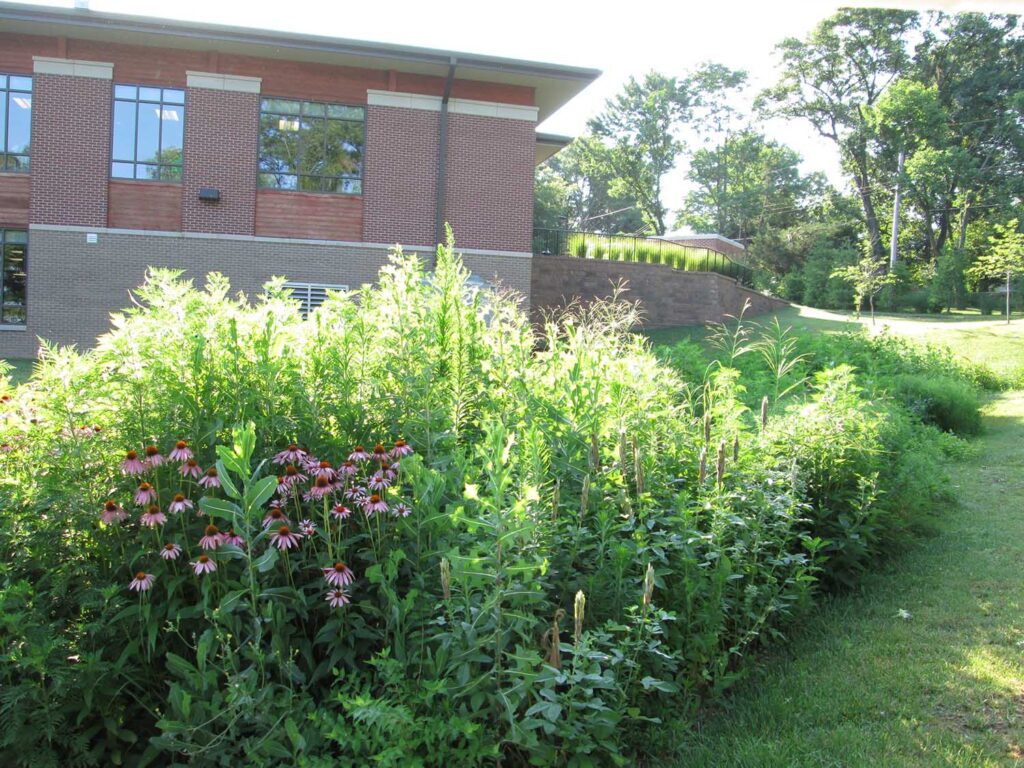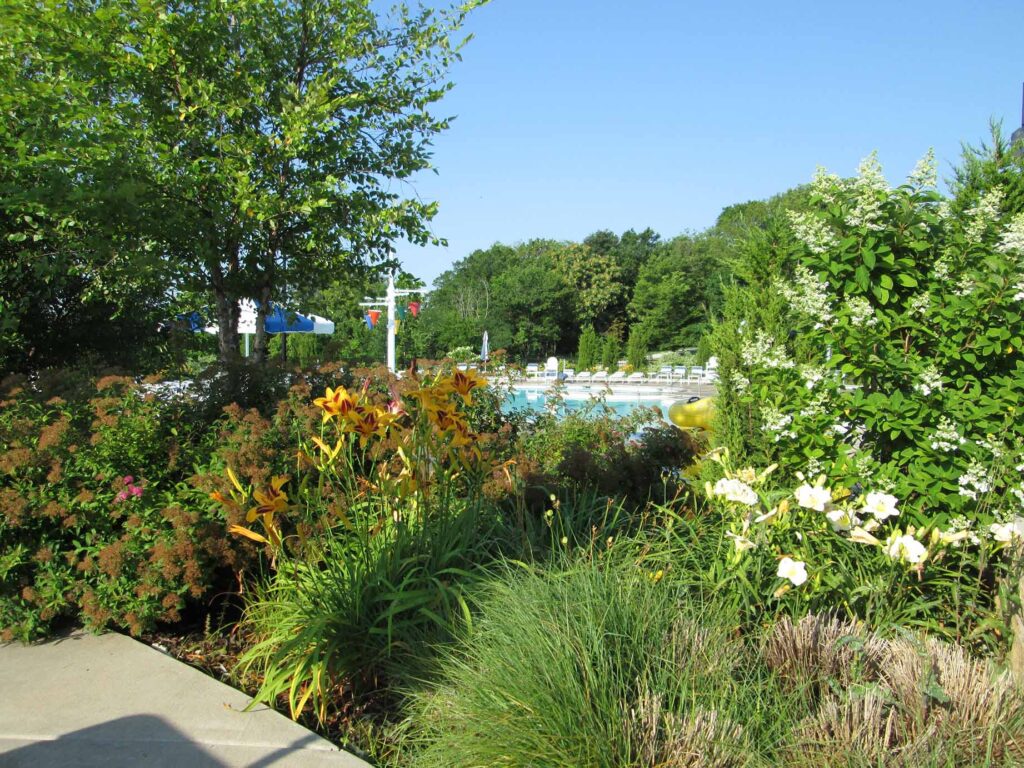Sustainable Design – Bioretention Basins
Sustainable design principles are an integral component of landscape architecture, guiding the planning, design, construction, and management of landscapes to minimize negative environmental impacts and increase ecological resilience.
Multiple elements can, and are, incorporated into a sustainable design, including thorough site analysis, native plant selection, energy efficiency, and use of sustainable materials. Another key strategy is water conversation and management. This approach can involve rainwater harvesting, permeable paving, bioswales, green roofs, and drought-tolerant plants. Use of these tactics help recharge groundwater, mitigate flooding, and improve water quality.
Sustainable Design – Bioretention Basins Read More »



